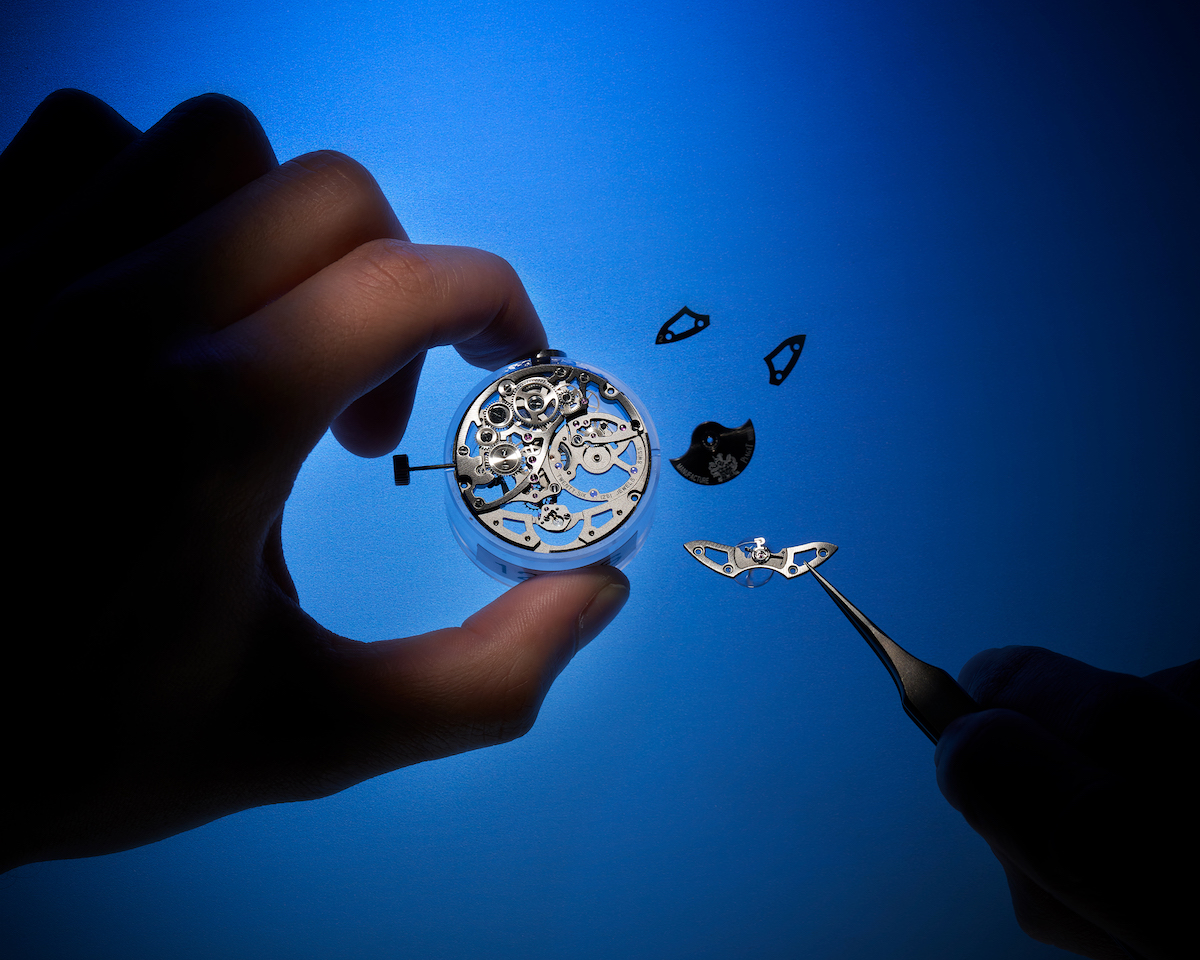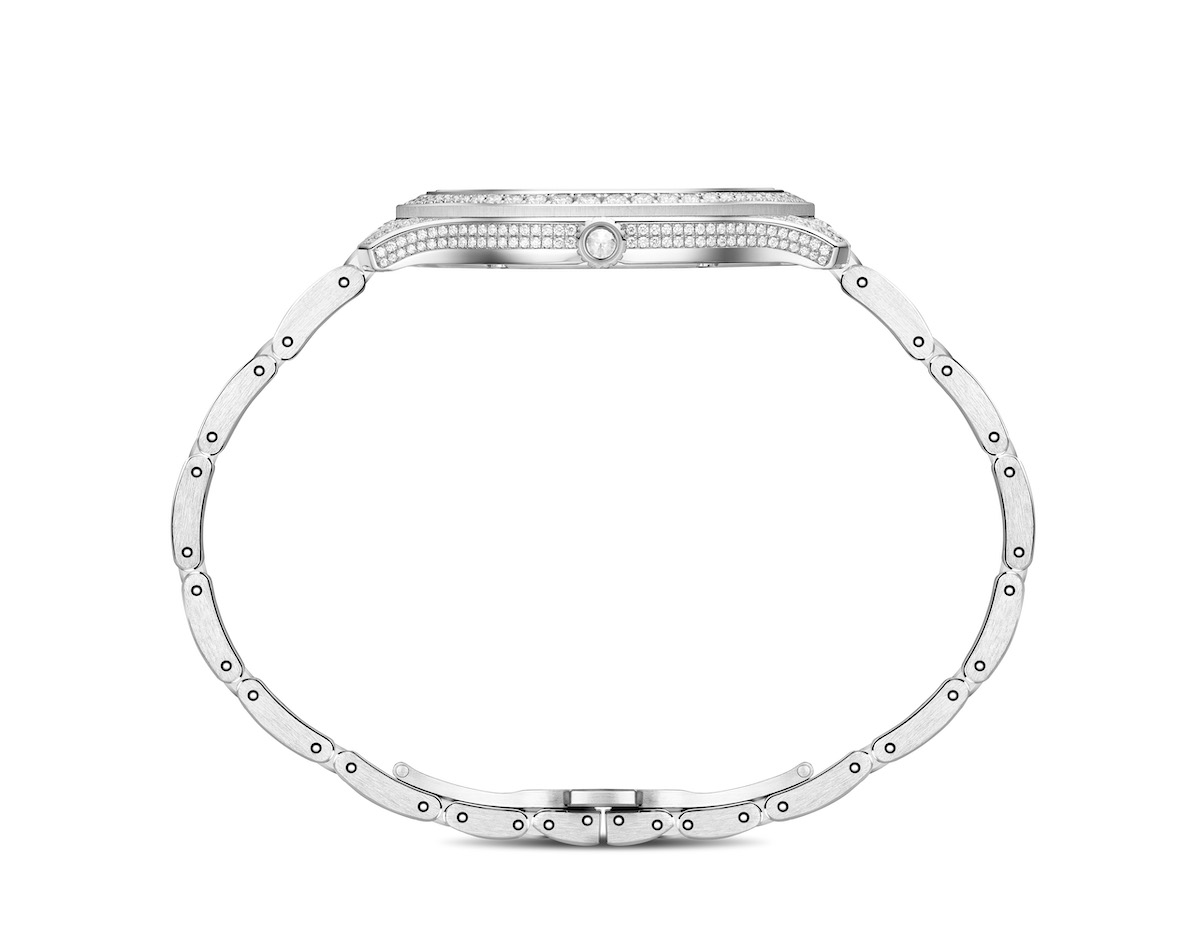
The new 1200S1 caliber inside the Piaget Polo Skeleton Diamond Pave watch was several years in the making and is based on previous ultra-thin calibers.
Even if you don’t like diamonds (and who doesn’t like a diamond or two?), you can’t help but marvel at this masterpiece by Piaget. Thousands of hours of research and development to create the ultra-thin caliber and days upon days of meticulous workmanship to set the more than 1,700 diamonds — all to demonstrate its fine watchmaking and high jewelry prowess. In fact, it isn’t often that brands get to showcase both their technical prowess and their Métiers d’Arts skills, but with the new Piaget Polo Skeleton, this venerable Swiss brand does exactly that.

Side view of the ultra thin Piaget Polo Skeleton Diamond Pave watch at Watches and Wonders Geneva 2022
The new watch house an ultra-thin movement on the inside and mega-diamond settings on the outside for a dazzling delight set for anyone who has the courage to outshine everyone. The 1,746 brilliant-cut diamonds are really only there, though, to accentuate the wonderful Caliber 1200S1 self-winding ultra-thin skeletonized movement seen via a sapphire crystal and case back. This is one of the world’s thinnest mechanical self-winding movements at just 2.4mm thick (the size of two paper envelopes). When cased in gold, the watch still only measures 7.35 mm in thickness – roughly the height of four quarters stacked.

View from the back of the Piaget Polo Skeleton Diamond Pave as seen at Watches and Wonders Geneva 2022
The movement is based on its famed 1200P that was two years in the skeletonization phases to achieve the 1200S. The brand’s master craftsmen then further perfected this caliber for another two-and-a-half years until they arrived at this new generation Caliber 1200S1.
Why skeltonizing the Piaget 1200S1 Caliber is so challenging
Creating a skeletonized watch is no easy feat and only the masters can complete this task. It requires hand carving every movement component (hundreds of pieces) to reduce the metal to its barest minimum while still maintaining enough strength in the material to do the job of timing properly.

Piaget Polo Skeleton Diamond Pave, Watches and Wonders Geneva 2022
The new generation caliber also boasts some top-of-the-line materials and features, including a regulating organ that offers stronger resistance to magnetic fields (something we come into contact with every day just using cell phones and microwaves). The off-center oscillating weight at 8:00 is placed there to allow the most light between the sapphire crystals, thereby enabling an unobstructed view of the multi-layer ultra-thin movement.
As mentioned, skeletonizing a watch without compromising its accuracy or function is difficult. Skeletonizing it while adding function and precision is even more challenging. However, Piaget manages to offer 44 hours of power reserve in this 42mm watch. It is also water resistant to 30 meters for those who want to bring diamonds underwater with them.
As to the diamond setting, which takes more than 10 days’ time (61 hours) by a master gem-setter, there are 268 diamond brilliants on the case and another 1,478 on the bracelet – transforming the mechanical prowess into a mechanical work of art for the wrist.





